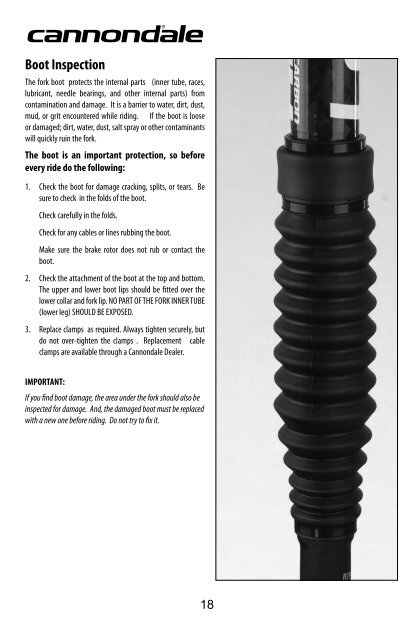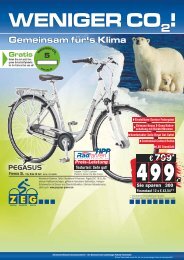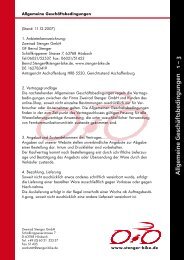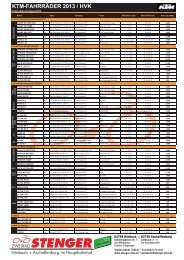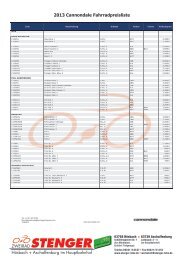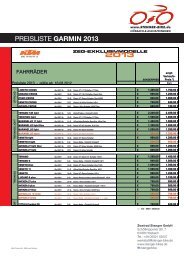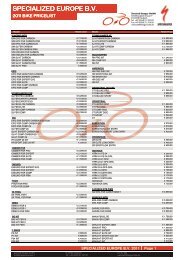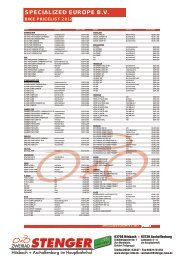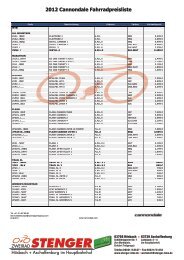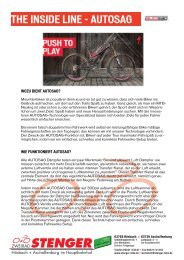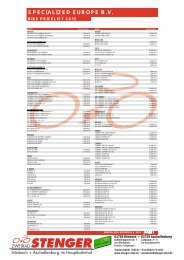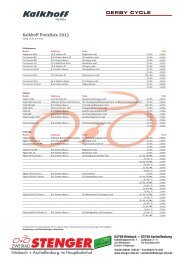OWNER'S MANUAL SUPPLEMENT 2011 LEFTY
OWNER'S MANUAL SUPPLEMENT 2011 LEFTY
OWNER'S MANUAL SUPPLEMENT 2011 LEFTY
You also want an ePaper? Increase the reach of your titles
YUMPU automatically turns print PDFs into web optimized ePapers that Google loves.
Boot Inspection<br />
The fork boot protects the internal parts (inner tube, races,<br />
lubricant, needle bearings, and other internal parts) from<br />
contamination and damage. It is a barrier to water, dirt, dust,<br />
mud, or grit encountered while riding. If the boot is loose<br />
or damaged; dirt, water, dust, salt spray or other contaminants<br />
will quickly ruin the fork.<br />
The boot is an important protection, so before<br />
every ride do the following:<br />
1. Check the boot for damage cracking, splits, or tears. Be<br />
sure to check in the folds of the boot.<br />
Check carefully in the folds.<br />
Check for any cables or lines rubbing the boot.<br />
Make sure the brake rotor does not rub or contact the<br />
boot.<br />
2. Check the attachment of the boot at the top and bottom.<br />
The upper and lower boot lips should be fitted over the<br />
lower collar and fork lip. NO PART OF THE FORK INNER TUBE<br />
(lower leg) SHOULD BE EXPOSED.<br />
3. Replace clamps as required. Always tighten securely, but<br />
do not over-tighten the clamps . Replacement cable<br />
clamps are available through a Cannondale Dealer.<br />
IMPORTANT:<br />
If you find boot damage, the area under the fork should also be<br />
inspected for damage. And, the damaged boot must be replaced<br />
with a new one before riding. Do not try to fix it.<br />
18


